Rana Plaza Tragedy 2
28 June 13
Posted at 5:39
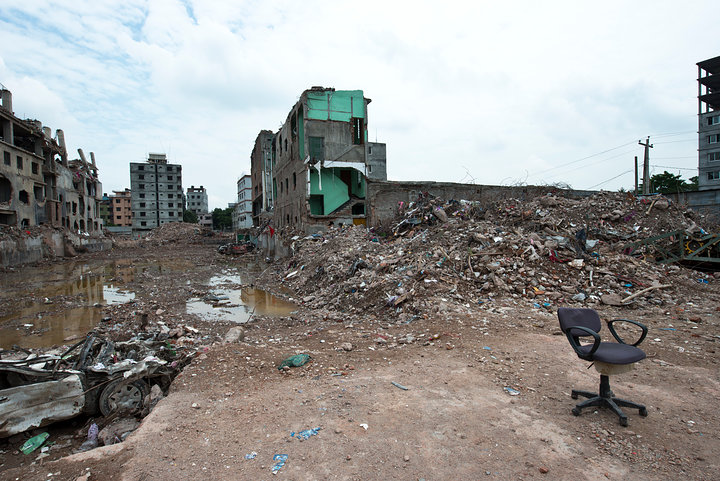
On April 24th 2013 the Rana Plaza, an eight storey building which housed five garment factories, a shopping mall and a bank, collapsed. Above and below are some images of the site taken 20 days after the collapse.
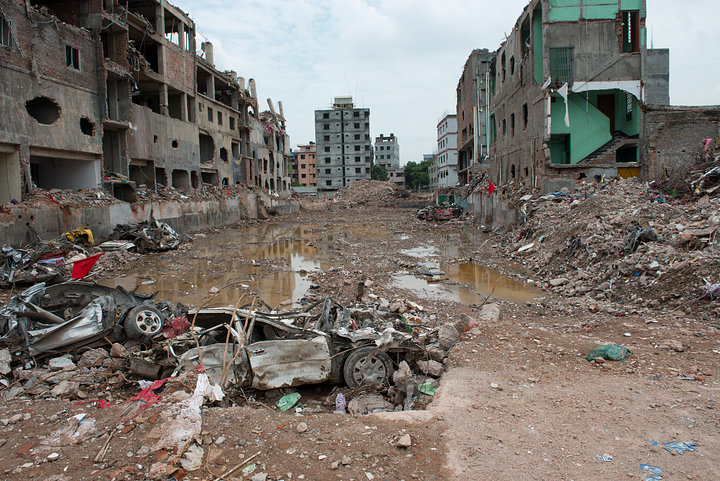
The building had occupied the gap seen here.
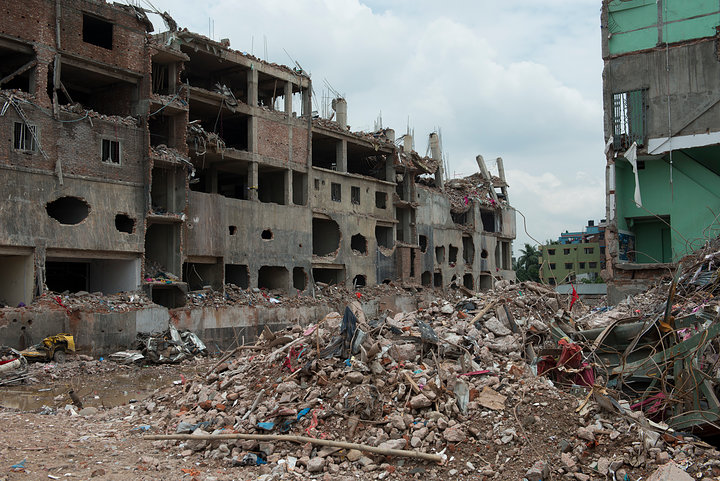
1,127 people lost their lives when the building collapsed. 2,438 people were rescued alive over a period of 17 days after the collapse, many have horrendous injuries and 12 have died of injury after being rescued alive.
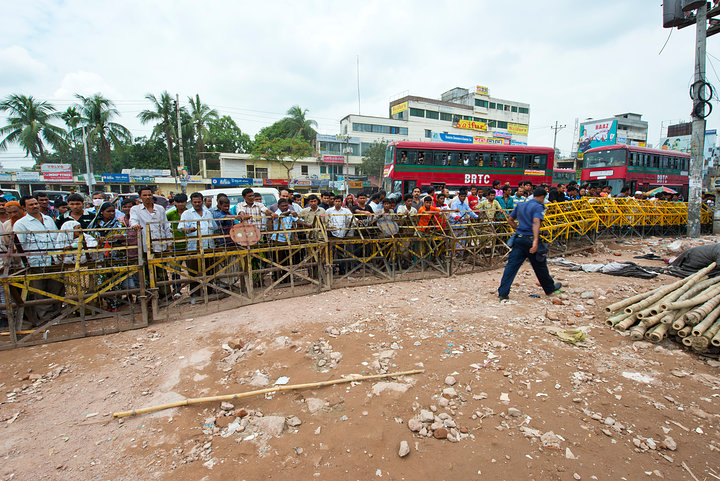
22 days after the collapse a large group of onlookers stand and stare at the site. The search and rescue operation is now over with the authorities stating that there are no more bodies in the wreckage.
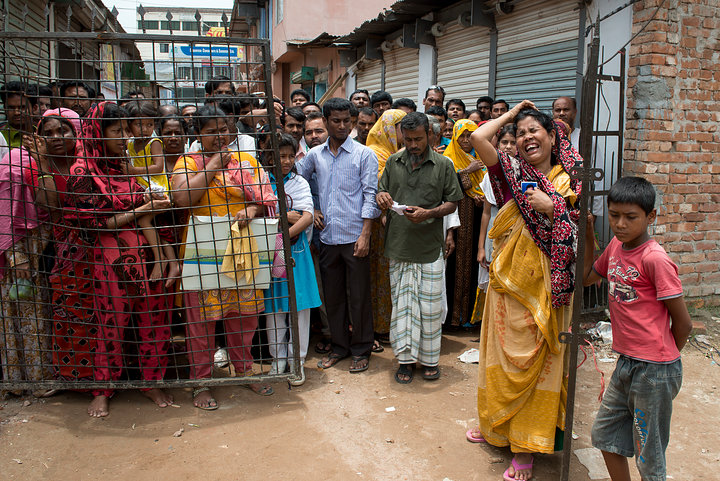
But people with missing relatives still gather near the site holding photographs their missing kin.
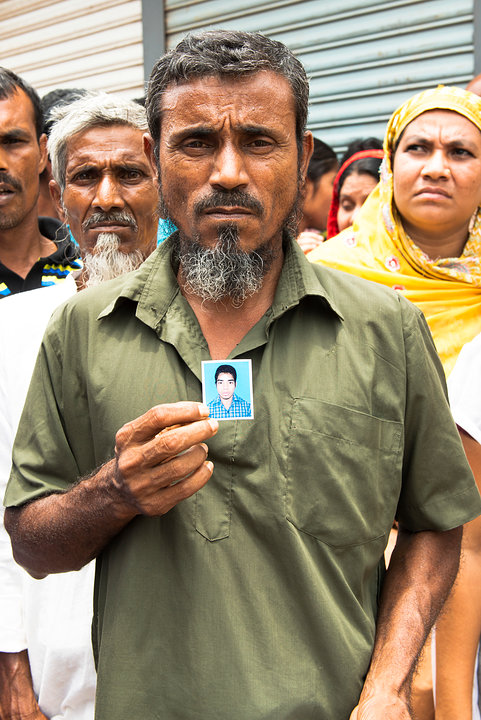
As the bodies were recovered from the collapsed building they were taken to the Adhar Chandra High School
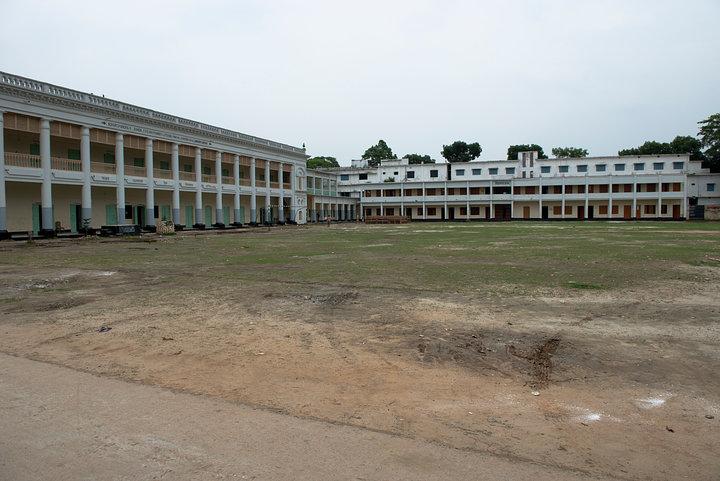
The school was temporarily closed for a month. Its playing fields, above, became a temporary mortuary. People with missing relatives came here to identify corpses and take them away for burial. Bodies could not be left here in the open for very long for health reasons so many were buried by the Civil Defence after having DNA samples taken.
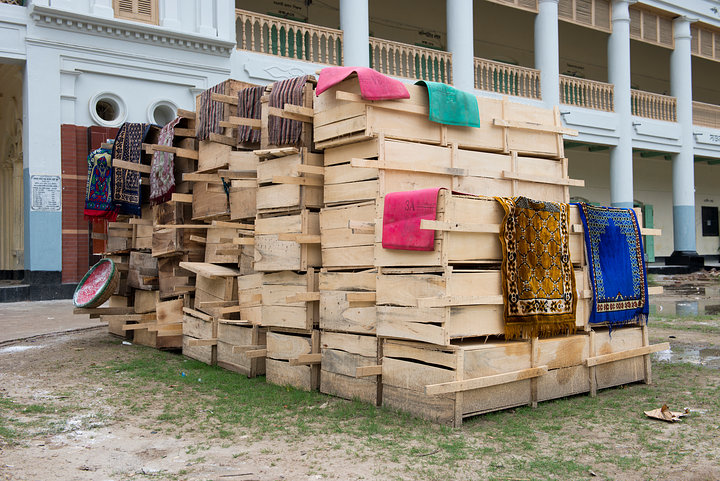
/

Coffins were still stacked in the grounds awaiting further recovered bodies, which at this point was most unlikely
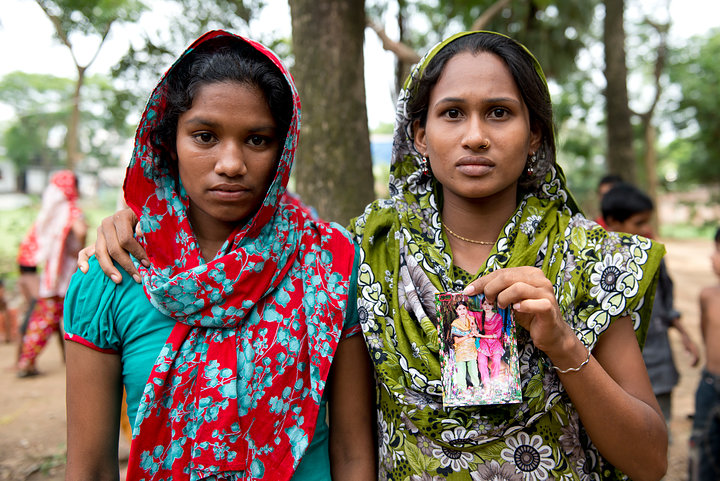
and grieving relatives still visited in the hope of finding their loved ones.
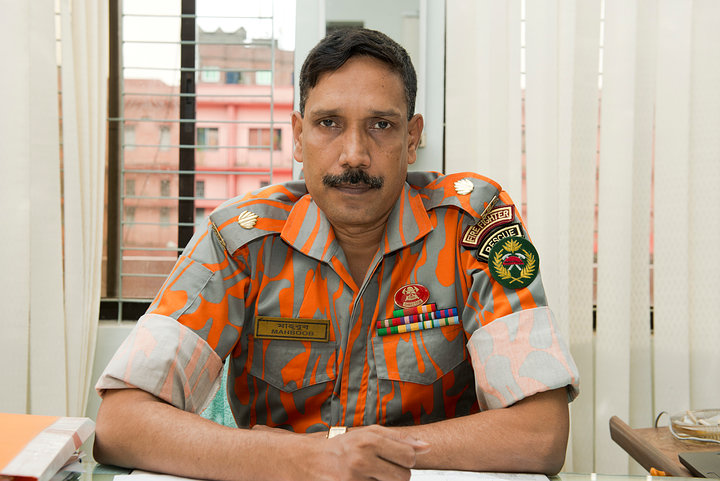
The rescue operation was overseen by major Mohammad Mahboob of the Fire Service and Civil Defence Directorate. An organisation I found to be more regimented than the Army. On the day of the collapse the FSCO deployed 400 rescuers from their own ranks. They were joined by a further 450 volunteers, many were univesrsity students already trained as volunteers by the Red Crescent.
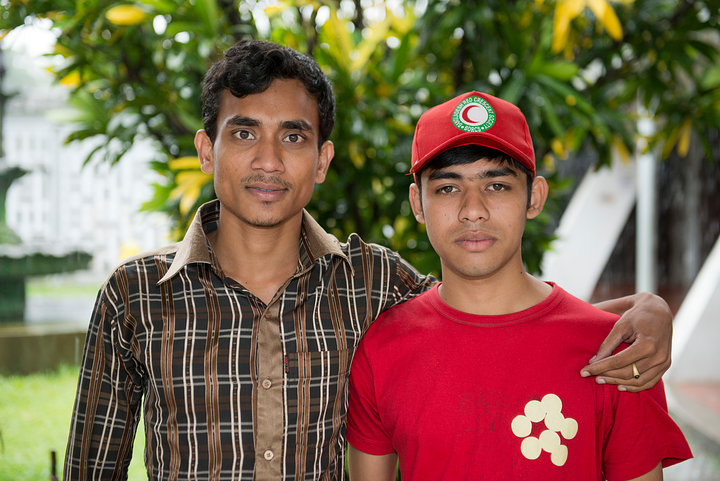
These two students were on site at the Rana Plaza within an hour of the collapse and worked 12 hours on 12 hours off for the next 21 days.
Rescuers described to me how the building just collapsed and was like a pile of eight giant pancakes. they had to dig in from the top, and search between the 'pancakes' one level at a time. Scraping put rubble, cutting metalwork and recovering trapped workers and dead bodies. Some volunteers arrived without having any training but with a desire to help. An engineer called Kaykaab arrived on day 2 with his own specialist cutting equipment. he worked with the rescuers for 13 days. On day 13 to everyones surprise they discovered a girl, Shahara, trapped on what would have been the second floor. Somehow she had survived but was trapped. The rescuers 'potholed' to her and got her water and oxygen but they could not reach her physically. Metal rods needed cutting away and then she would have to be brought out through a tunnel that was just a few inches high. Kaykaab volunteered to crawl in with his cutting equipment to clear a way out. A stray spark caused an explosion and fire. Shahara, the survivor, persished. Kaykaab was severely burnt. He was rescued and the government flew him to a specialist burns unit at a hospital in Singapore. Tragically he died just 24 hours later.
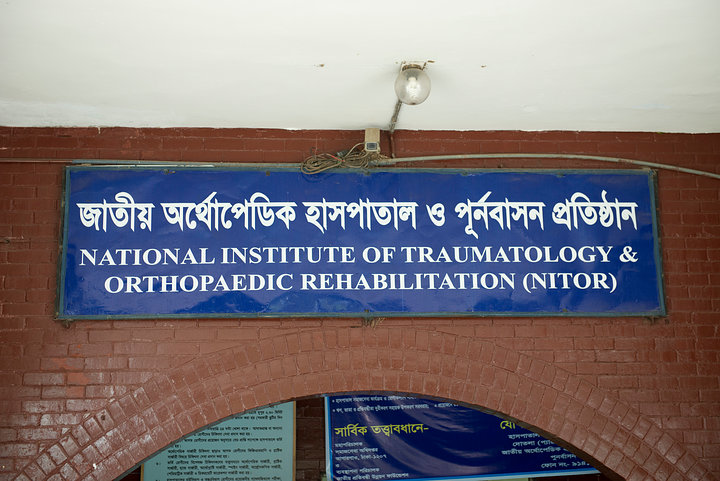
Many of those who were rescued alive but injured were taken here to the National Institue of Traumatology and Orthopaedic Rehabilitation. A public Hospital in Dhaka.
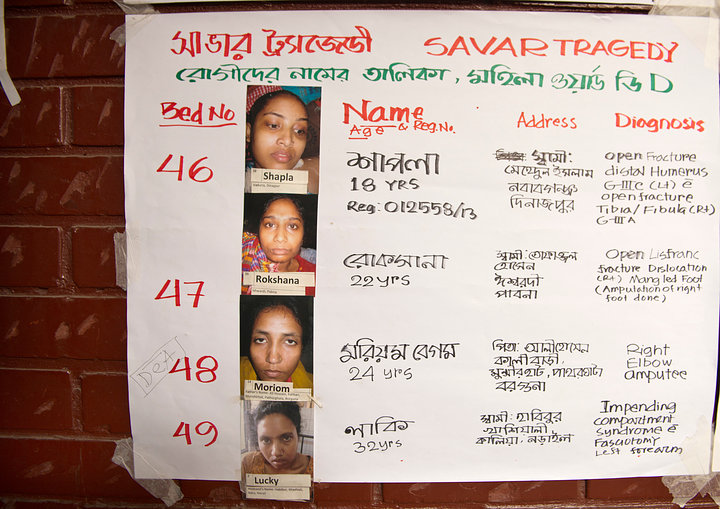
The corridor walls in the hospital were covered with notices containing photos and details of inpatients. These proved valuable to the thousands of relatives searching for loved ones.
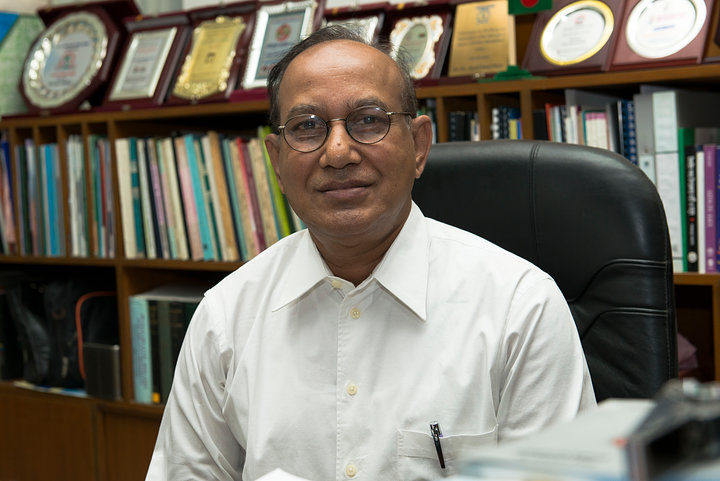
Prof. (DR.) KH. Abdul Awal is the director of the NITOR known locally as the Pangu Hospital. I talked with Dr Awal about the task of accommadating around 400 additional patients. He and his team appeared quite calm and confident about the task. Not only caring for so many spinal injuries, amputations etc. but also planning and dealing with the long term physical and psychological care and rehabilitation. having read so much in general about the poor health and hospital conditions in Bangladesh in general I was pleasantly surprised at the standards and professionalism I witnessed in what must be the lowest standard hospital on the ladder. The hospital depends on government aid and charitable donations to finance it. The mortality and infection rates seemed surprisingly low - in fact a consultant from Kings College Hospital London told me that she thought mortality rates from a similar disaster in London, treated in London hospitals, would most likley be higher.
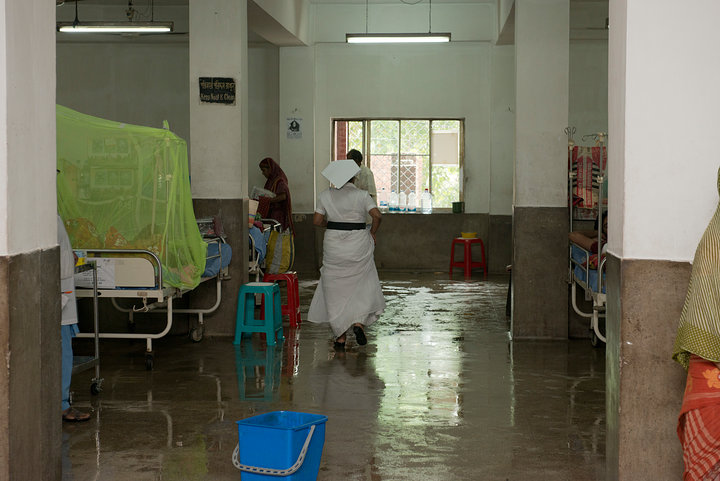
However the wards looked somewhat different to what we might be accustomed.
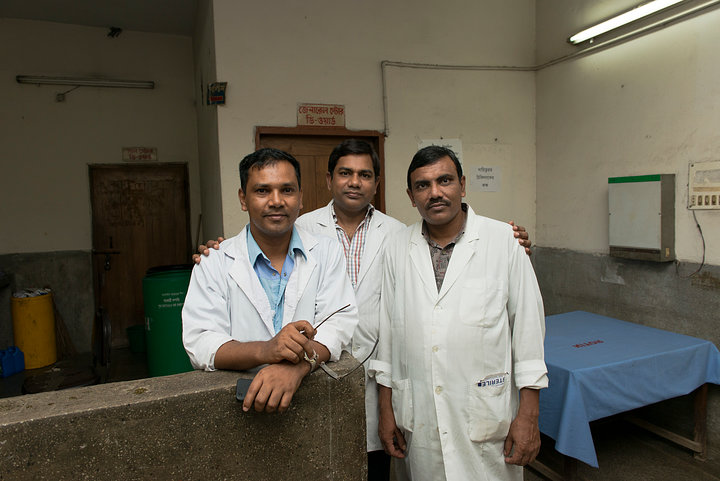
These three nurses told me they had 140 patients still in their block and had discharged 60 so far - so their wards had taken 200 of the victims.
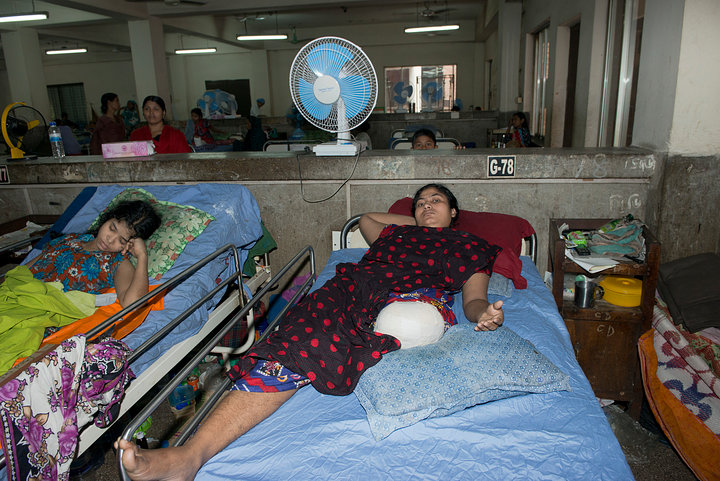
This is Rahanna, one of the first survivors I spoke with. Rahanna was unconcious when recsued and woke up in hospital. She has been told she was trapped for ten hours. Her left leg was crushed and has been amptated above the knee. Rahanna was on the 7th floor of the Rana Plaza and was therefore one of the first to be rescued. She has a five year old son and like so many of the survivors she only seems concerned about how and when she can get back to work to earn money for her family.
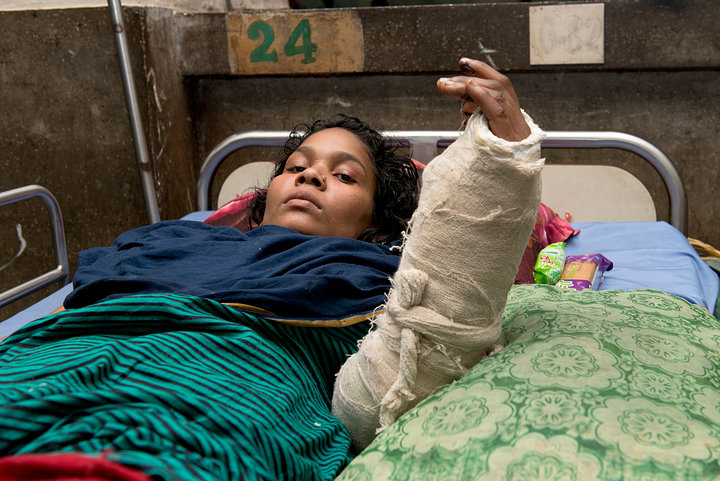
Corona is 20 years old her left arm and leg both have multiple fractures. Corona worked on the sixth floor of the Rana Plaza. She remembers nothimng of the collapse and was unconcious until she awoke in an emergency clinic in Savar. from there she was transferred to Pangu where she can receive specialist care. Corona has a husband and two sons, 5 and 3 years old. Working seven long days a week she was paid just 3000 Taka (about £25) a month.
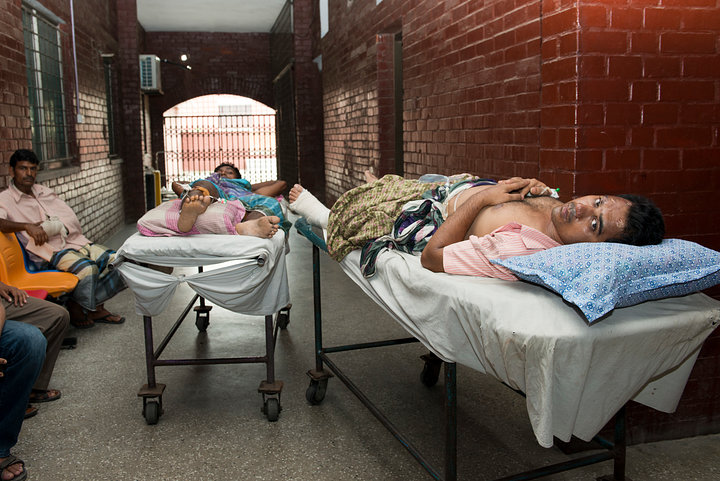
With the wards overflowing with Rana Plaza victims some regular patients from road traffic accidents were spending some time on hospital landings.
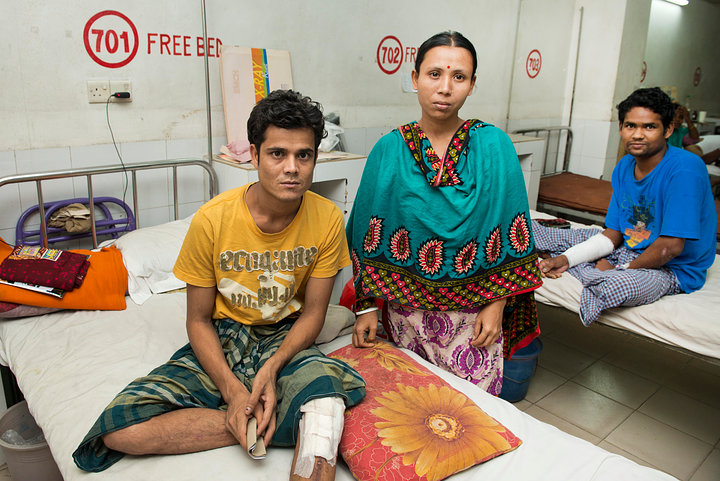
I visited a second hospital, the Enam Medical College and Hospital. This is a private hospital that had opened up some beds free of charge to Rana Plaza survivors. They appeared to have made it clear that the beds were not being occupied by paying patients! Although this is a private hosipital I found it inferior in many ways to the Pangu.
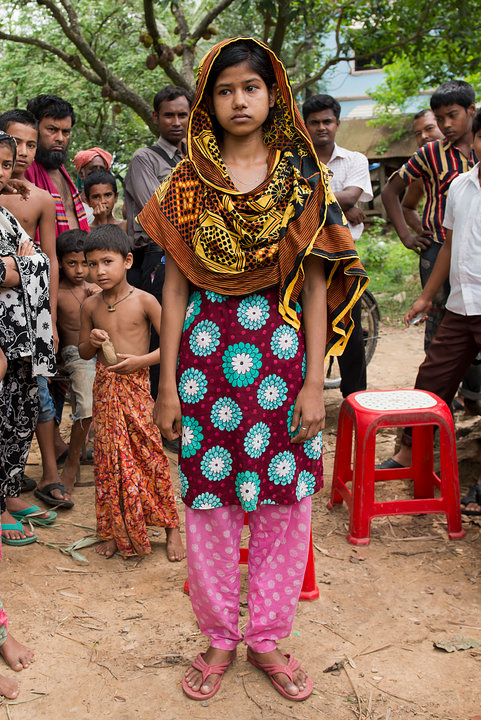
I visited an area of Dhaka where many garment workers live. This is Kusamata a nineteen year old garment worker rescued with just minor injuries from the 3rd Floor of the Rana Plaza. She spent two days trapped in the wreckage unconcious for a lot of that time. After one day in hospital Kusamata was discharged and retruned to her home. More than twenty days later she appears traumatised still. Like so many girls who work in garment factories, making clothes mainly for Western retailers, Kusamata left her rural home in near Bogra 200km away to earn money and live in the city when she was 17. She earns around £20 per month.
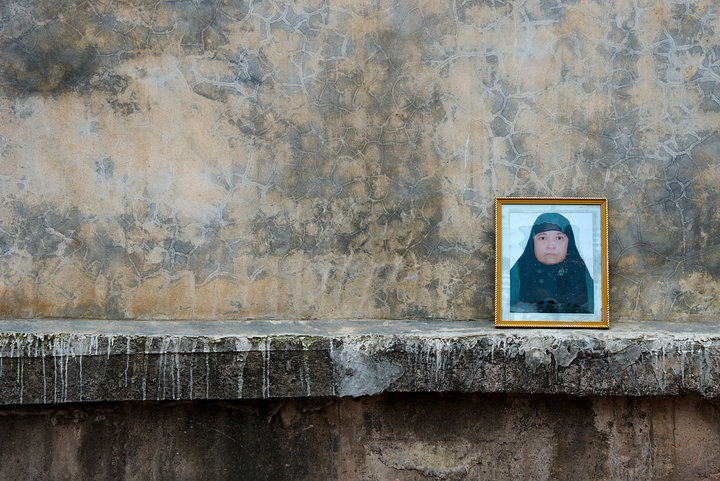
I returned to the Rana Plaza site. Next to the ruins I spotted this photograph - either of a person missing or a victim. I also met some relatives of the bereaved who still gather at the site every day.
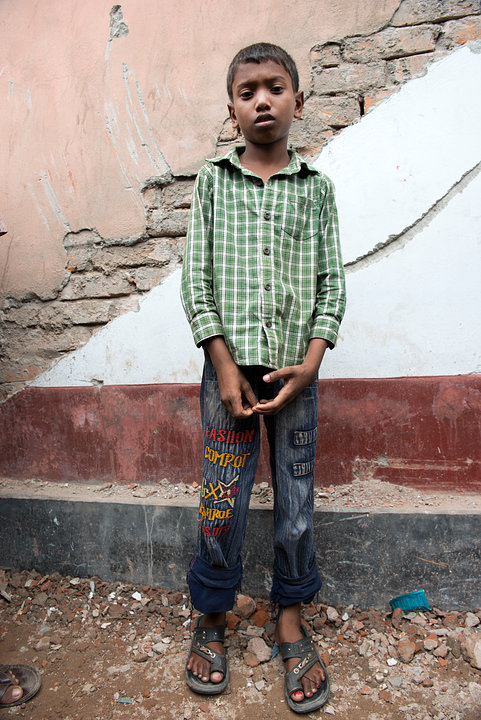
This is Muna. He claims to be thirteen years old but doesn't look it. Both his parents were killed in the building collapse. He spends his days near the Rana Plaza site. His future looks bleak as he appears to have nobody.
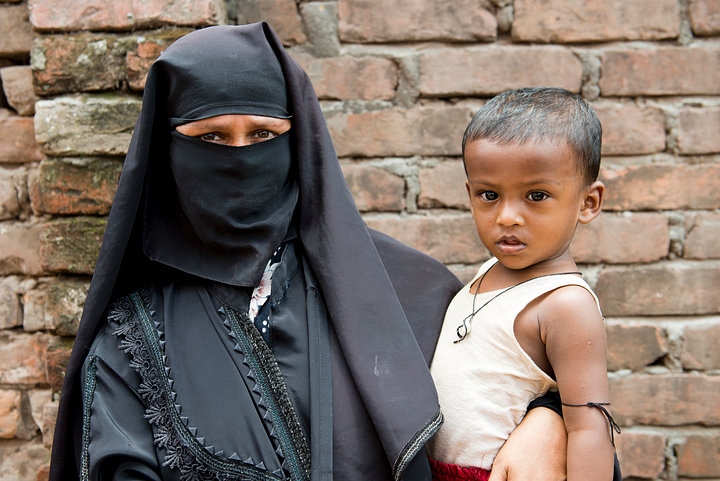
This is 18 month old Al Sahib with his Grandmother, Nargis. His Mother was killed in the building collapse. They had been abandoned by his Father soon after he was born.
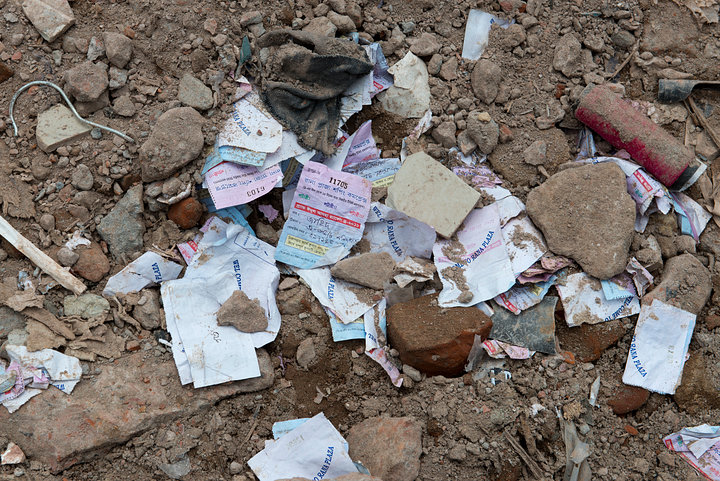
There are so many poignant images. Above in the rubble cotton reels and coupons given as recognition to workers - 'Welcome to Rana Plaza' stamped on the back of each one.
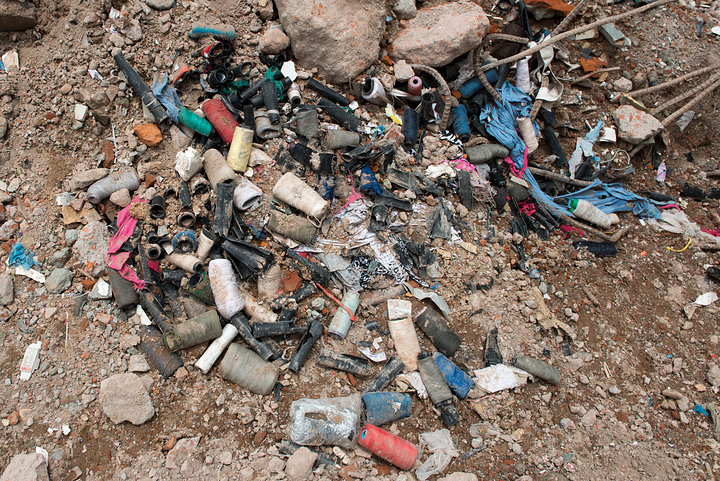
More cotton reels, the lifebood of garment making, lay in the rubble.
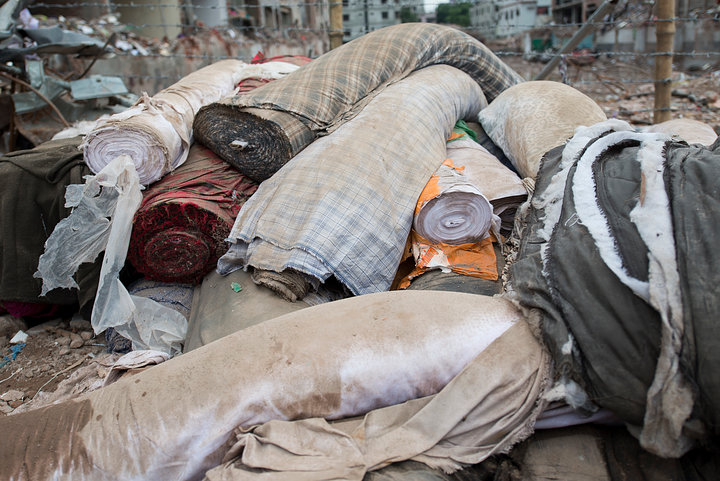
Rolls of material are everywhere - they eerily symbolise the workers who perished and will now never convert the material into garments.

The Rana Plaza was owned by Mohammad Sohel Rana. He is a thrity five year old alleged gangster who gained power by being a supplier of 'muscle' to local politicians for which he received favours and a blind eye was turned to his activities. The land on which the Rana Plaza was built was 'grabbed' when Savar was deveoping into Bangladesh's garment centre. The building had no permit for the upper floors and was not intended for use as factories but just low rise shops. In the days prior to the collapse large cracks had appeared in the walls but the owner insisted that the building was safe and workers should report for work. Many famous western brands had clothes manufactured in the Rana Plaza including Primark, Tesco, Wallmart, Mango, Monsoon, Benetton and Matalan. On the 16th of May an Accord on Factory Building and Safety in Bangladesh was due to be signed and by 23rd May 38 companies had signed it although many American companies including Wallmart and Gap have refused.
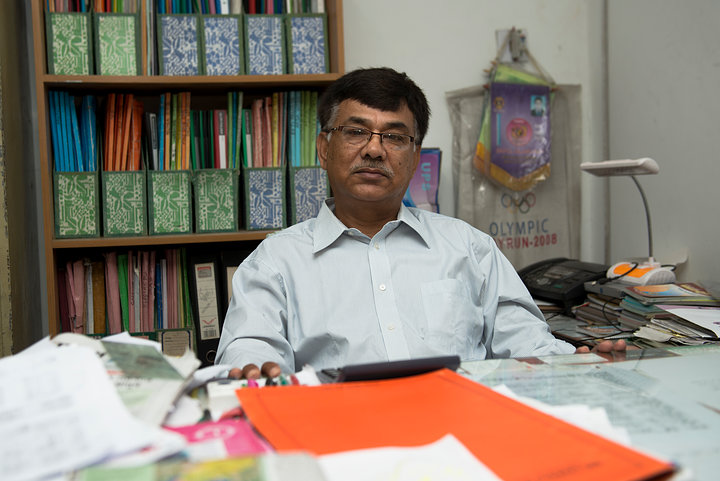
J.M. Shamsul Arefin - Director Mayc's Garments Limited
I decided to visit and photograph in a working garment factory. This was a difficult task. I visited about six factories and in each one I had to get past security and wade through the hierarchy until I got to meet with the owners. Each time I got that far, venturing into some pretty unsavoury buildings, I was given a polite but firm rejection based on stories about government regulations and needing the correct 'paperwork'. I asume this was all because they were ashamed or frightened to expose their workng conditions. I was exhausted and soaked with persperation after traipsing around Dhaka with my camera gear in 35 plus degrees c when I got to meet Mr J. M. Shamsul Arefin the director of Mayc's Garments Ltd (yes it's Mayc's not Macy's) I was relieved and excited when my interpretor confirmed that Mr. Arefin had given us permission to shoot on his premisies - I had all but given up.
I guess not surprisingly Mayc's was a clean and appeared to be a safe work environment.
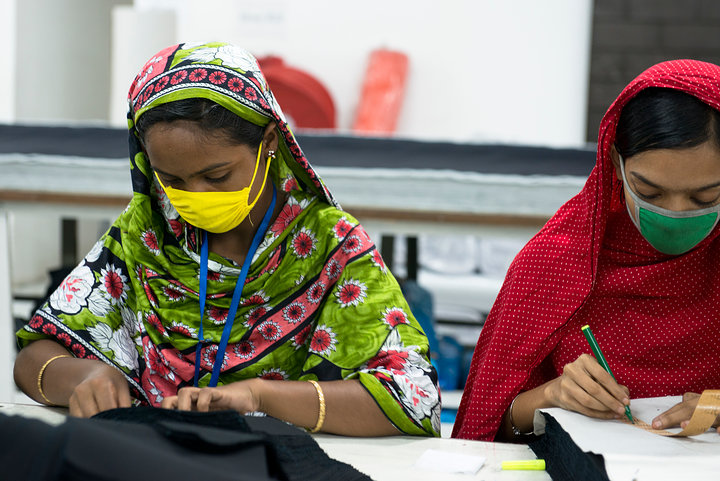
I photographed on two floors - above a finishing area on the second floor. Below the manufacturing area on the third floor.
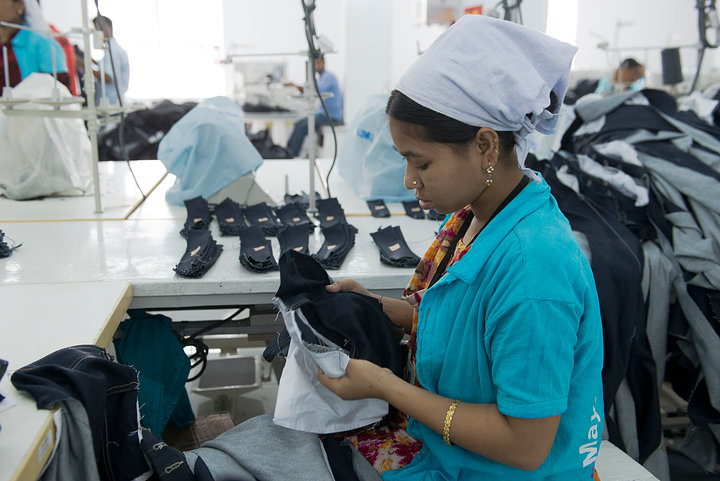
A worker inspects some denim samples.
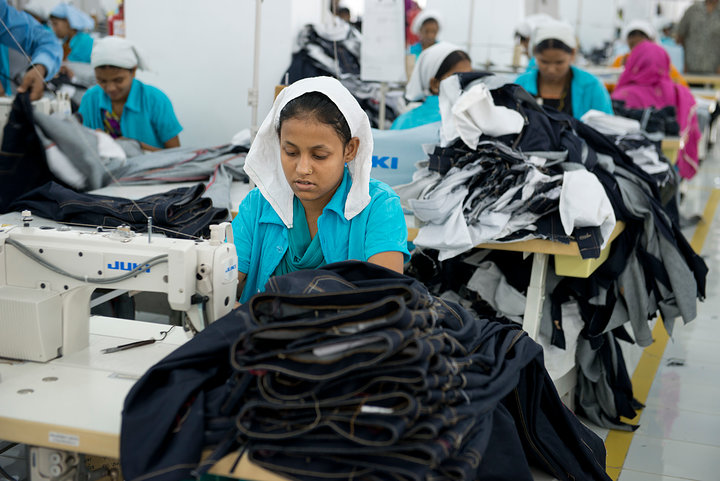
Denim jeans being produced for the German market
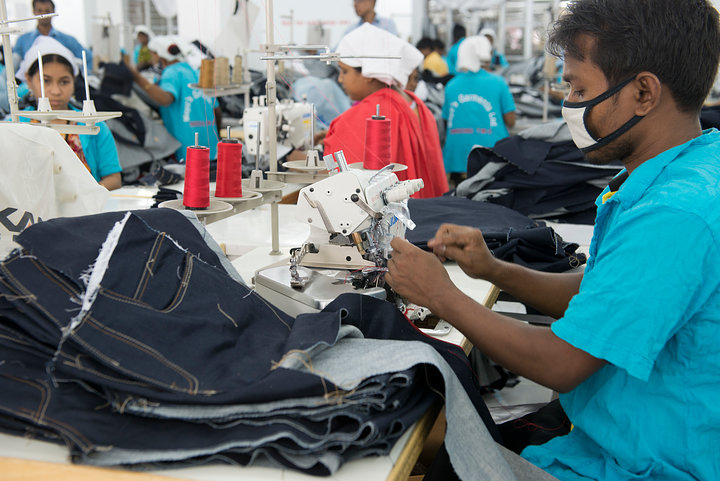
The working environment was clean, safety apparatus, fire and breathing apparatus were evident as were safety instructions, fire and emergency exits. I have seen work by a Bangladeshi photographer and activist Taslima Akhter which covers factory conditions more like I anticipate they were in Rana Plaza.
I will be exhibiting work from my project on the Rana Plaza Tragedy at the Espacio Gallery in Bethnal Green Road London from October 31st until November 5th. I also hope to publish a photobook later this year. A previous photoblog on the project and some text blogs made whilst I was in Dhaka can be see here http://www.leflic17images.com/blog/2013/may/
I plan to return to Dhaka at some point (subject to funding!!) to follow up with the survivors and workers I met in May.